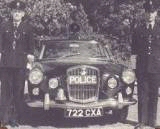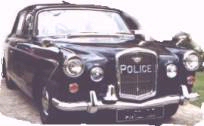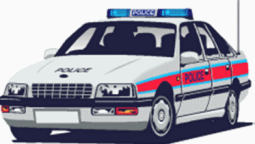This was the emergency response car, and at that time was a Wolsely model 110, with a six cylinder engine that could, with coaxing, reach about 95mph. This car also patrolled the adjoining areas, and worked under the control of the Information room at Scotland Yard, and so was rarely seen at the home police station. In addition we had two Hillman Minx cars, one of which was reserved for the Chief Superintendents use. This car was perhaps driven about 50 miles per week and not to be used for any normal work other than taking the Chief Superintendent, occasionally, to Scotland Yard for a meeting or for social meetings with local dignitaries. The second Hillman was referred to as the ‘GP’ Car or general-purpose car and was used for all duties, as its name implies.
The most important vehicle in the police station fleet, was a Morris LD van that was the work-horse and carried everything from, prisoners to dead bodies. Property that had been found abandoned or lost, and was too bulky to be carried by a foot policeman, was also transported in the van. The recovery of stolen motorcycles or bicycles also took up a lot of the vans time. It was also used to tow broken down vehicles when necessary, and also carried groups of policemen to the scenes of an incidents or demonstrations. The driver posted to the van was probably the hardest worked of the drivers and was at everyone’s beck and call, and even to the other drivers. In between time it was also his duty to make the tea for the staff working in the police station, feed prisoners, and keep the coal fire alight that was the police stations only heating at that time. The explanation for his hard work, was that all police drivers were graded, and the van driver was a low grade at class 4. There was one grade lower at class 5 but this was the grade for complete novices after completing their first driving course, This first course was known as the “Standard car course” and having passed out, the newly qualified driver was then only authorized to drive the GP car and therefore limited in the amount of driving until reaching class 4.
Class 4 drivers fought to advance to the advanced grades, of which there were few places, and to impress senior officers of their qualities, took on more and more work, that just snowballed. Class 4 was achieved after a period of driving as class 5, and then attending a one day course of instruction on driving the van. The remaining grades were class 3, which was achieved after a further three week course. Grade 3 drivers were authorised to drive all the cars at the police station, but only to drive the prestige “area car” under the supervision of a class 1 driver. Class 1s and 2s were the drivers who were authorized to drive all the vehicles in the Metropolitan Police fleet, and their difference in grade came about as a result of their final scores on the final drive whilst attending the advanced driving course that lasted four weeks. Class 3 was very much a transitional grade between 4 and the very much sought after class 1s and 2s. A class 3 driver could not remain in that grade for the rest of his service, and had to attend the advanced driving course to advance to the top grades, or upon failure of the course, to be downgraded to class 4, almost certainly never to advance again. The final vehicles of the fleet were two Velocette motorcycles, that were used as a supplement to the men posted to walking beats,



